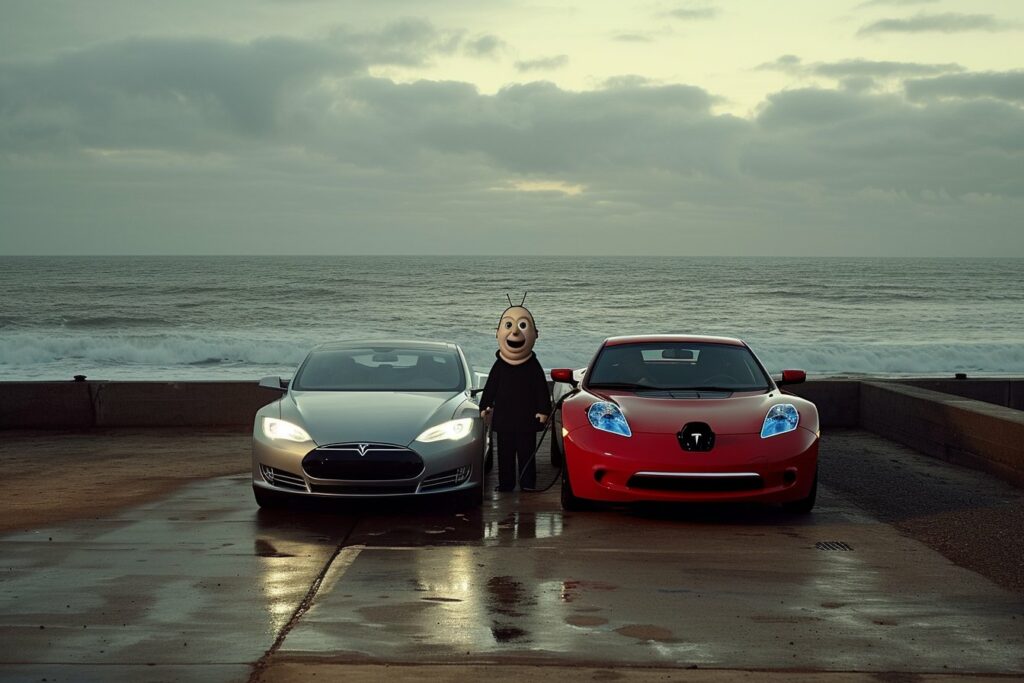In recent years, electric vehicles (EVs) have gained much attention and consideration due to the growing concerns about climate change and air pollution. Despite this global awareness, a recent news report suggests that actor Rowan Atkinson, widely known for his famous character Mr. Bean, may have negatively affected the reputation of electric cars and contributed to their slow sales growth. In this article, we will explore Rowan Atkinson’s role in shaping public perception towards electric vehicles, the challenges hindering EV adoption, and strategies to improve their reputation and attract consumers.
The “Mr. Bean” Effect on Electric Vehicles
Rowan Atkinson’s satirical character, Mr. Bean, has been captivating audiences with his humorous antics since the 1990s. However, one iconic scene in particular depicts Mr. Bean driving a blue, three-wheeled electric vehicle called the Sinclair C5, struggling for power and maneuverability. Although the comedy skit was intended for entertainment purposes, many believe it may have created an unfair association between electric vehicles and their perceived inefficiency or impracticality.
This portrayal may have deterred potential buyers who, influenced by the hugely popular British television series, might be concerned about the performance and convenience of electric cars. As such, it’s essential to examine and address these misconceptions to ensure that the public is well-informed about the current state of EV technology and its benefits.
Challenges Hindering Electric Vehicle Adoption
Aside from the perceived negative impact of Rowan Atkinson’s comedic work, there are various other factors contributing to the slow EV market growth currently witnessed around the world. Some major impediments include:
- Battery life and charging infrastructure: Many consumers harbor concerns about the range limitations of electric vehicles, fearing that insufficient battery capacity will leave them stranded without power. Furthermore, an inadequate charging network makes it difficult for EV owners to find convenient charging options, notably during long-distance journeys.
- Cultural perceptions: Traditional car enthusiasts might perceive electric vehicles as lacking in power, performance, or character, leading them to prefer conventional ICE (internal combustion engine) cars.
- High initial costs: Despite savings in fuel expenses and maintenance fees, electric vehicles usually come with a more substantial upfront price tag. This high entry barrier may discourage potential buyers from choosing an EV as their next vehicle purchase.
Improving Electric Vehicle Reputation and Sales
Addressing the challenges hindering widespread EV adoption is essential for increasing their market share and attracting more consumers to switch from ICE vehicles. Here are some strategies that can help improve the standing of electric vehicles in public perception:
Myth-busting and promoting accurate information
In response to Rowan Atkinson’s unintentional negative impact on EV reputation, it is vital to dispel the image perpetuated by the comedy skit through public education. Increasing awareness about modern electric vehicles’ capabilities, reliability, and performance can shift current misconceptions. Outreach initiatives such as test drives, seminars, and collaborations between automakers, governments, and environmental organizations should be utilized to communicate accurate information about electric vehicles.
Developing robust charging infrastructure
To assuage consumer fears regarding battery life limitations, significant investments in charging infrastructure must be made. Both public and private sectors should collaborate to increase the availability and convenience of fast-charging stations across urban and rural areas. Additionally, standardizing charging connectors and protocols can help further simplify the EV charging experience.
Offering financial incentives
To offset high initial costs and make electric vehicles more accessible to consumers, various government-led incentive programs should be introduced. Such measures could include tax rebates, purchase subsidies, or reduced electricity tariffs for EV owners. These incentives would lower the financial barriers that may have discouraged potential buyers from considering an EV as their next car option.
Demonstrating performance achievements
One effective way to address negative stereotypes associated with electric vehicles is by showcasing their impressive advancements in speed, acceleration, and handling capabilities. Popular automakers like Tesla have already broken ground in this aspect, competing successfully against luxury ICE vehicles. Enabling consumers to experience these performance improvements first-hand will go a long way in countering unfounded objections to EVs.
Taking Charge of the Electric Vehicle Future
In conclusion, although the popular perception of electric vehicles may have been negatively impacted by unintended influences such as Rowan Atkinson’s iconic character, Mr. Bean, it’s crucial not to overlook the other factors hindering wider EV adoption. By tackling challenges related to battery life limitations, cultural perceptions, and high initial costs, key stakeholders can work together to improve public opinion about electric cars, boost their sales, and secure a sustainable future for generations to come.


